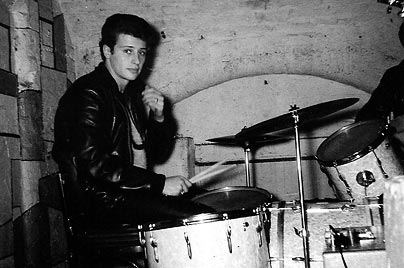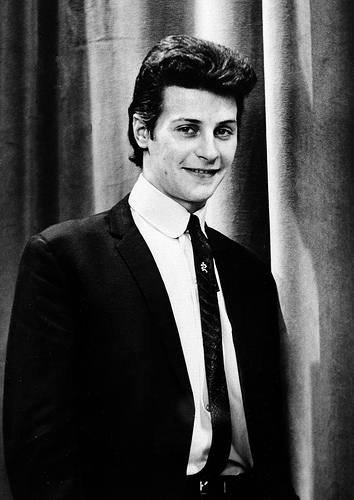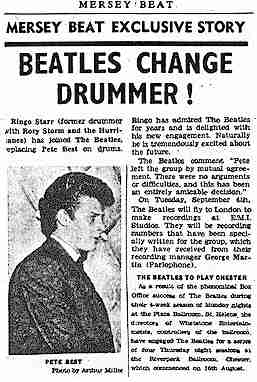| Notes and Quotes: "Love Me Do" (Pete Best) |
|
| This version
shows the Beatles trying out the song for Martin, probably imitating Bruce
Channel's "Hey! Baby," that had topped the charts in March. That recording
featured Delbert McClinton on harmonica. Indeed, John had McClinton show
him how to play the harmonica part from that song during Channel's 1962
tour of England at a stop at Liverpool in the summer of 1962 (Bronson 1985:105). |
| However, the Beatles had already recorded this version by the time they had met Channel and McClinton. Martin asked them to change their arrangement when they recorded to include the harmonica. Lennon put his guitar aside and improvised the harmonica part, repeating it almost verbatim in future recordings. |
| The underlying
rhythm is a kind of shuffle/swing, triple subdivision of the beat. An
unusual feature of this version is the uneasy shift between triple and
duple (swing versus "straight") rhythm in the second chorus during the
harmonica solo. |
| The example appears to show Best to be a unsure of himself;
however, this may also have been an overly ambitious arrangement ploy
on the part of the Beatles. That is, knowing the song does not have much
going on musically or textually, they might have hoped that the tension
between threes and twos in this second bridge would carry the song. The
pause at the end of the chorus extension would have allowed an easier
transition from the duple rhythm of the second chorus back to the triple
of the verse, suggesting that the rhythm shift was part of the planning
of the song. Instead, it became a transition to the end of Best's tenure
with the Beatles. |
| Perhaps the most
interesting structural feature of the song is the pause at the end of
the verse, just before the hook. This extends the symmetrical 8-measure
line to nine measures, and makes what would have been a 12-measure line,
13 measures. This kind of extension is fairly common in pop music and
helps create metric interest by putting larger metric phrases off-center.
That is, a listener can hear the meter at several levels simultaneously.
(And dancers experience this kinesthetically.) You can hear phrases as
two-measures, four-measures, and eight-measures long. When an arrangement
inserts an extra measure, this entire symmetry is put askew. |
 |
|
| Schedule |
|
2 February, 2012
|


